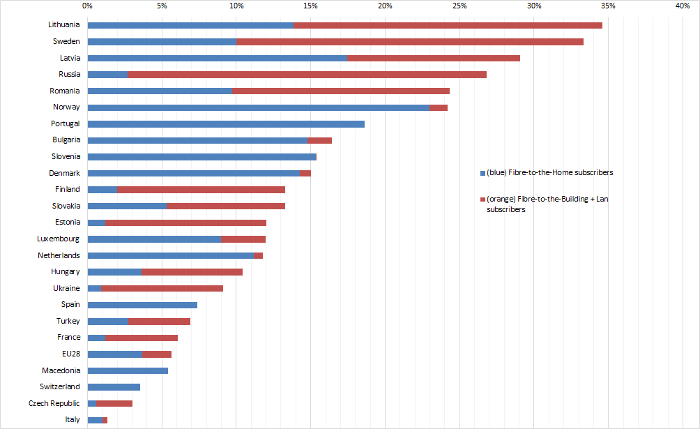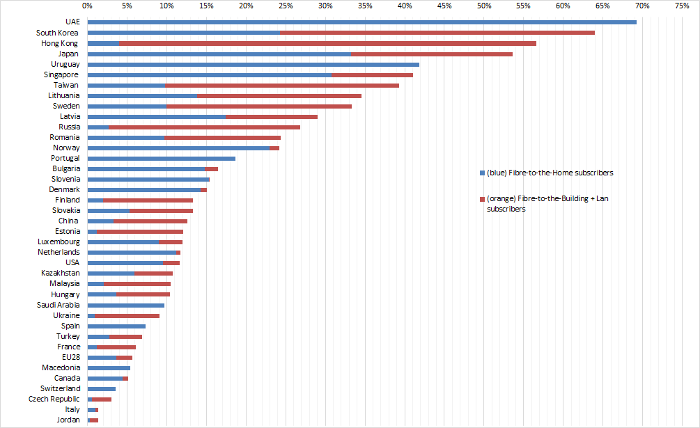Nearly 15 million FTTH/B subscribers in Europe
Wednesday, February 11th, 2015
FTTH subscribers in Europe: nearly 15 million homes!
WARSAW — FTTH CONFERENCE — The number of fibre to the home (FTTH) and fibre to the building (FTTB) subscribers in Europe has soared, increasing by 50% over the 12 months ending December 2014, according to the latest update to the FTTH Ranking announced at a press conference held at the FTTH Conference in Warsaw today.
There are now nearly 15 million FTTH/B subscribers on the European continent (14.5 million to be exact) – not including Russia and the Ukraine, which would add a further 14.8 million homes to the total (source: FTTH market panorama prepared by IDATE for FTTH Council Europe).
European Ranking

Household Penetration of countries* with more than 1% household penetration
“This is phenomenal progress, and it proves that FTTH/B is poised to become THE mass market broadband product in Europe, even though there is still a long way to go to reach the Digital Agenda Target of 100 Mbps for 50% of Europe’s households by 2020!” said Karin Ahl, President of the FTTH Council Europe.
Although there were no new countries in the FTTH Ranking, there is a new momentum in Germany where alternative operators like Deutsche Glasfaser are pushing ahead with fibre deployment. The country is now very close to entering the FTTH Ranking – if progress continues at this rate, Germany is likely to reach the qualifying threshold of 1% of homes subscribing to fibre sometime in 2015.
Good progress was also reported in countries like Romania, Spain, France, Netherlands and Portugal. However, a number of European countries are still holding back on their fibre roll-outs and are missing out on the economic and social advantages that FTTH can bring. Countries like Austria, Belgium, Czech Republic or the United Kingdom connected fewer than 20,000 new FTTH customers during the whole of 2014.
Global Ranking

Household Penetration of countries* with more than 1% household penetration
* Economies with at least 200,000 households
Latest News
- Barb to start reporting TV-set viewing of YouTube channels
- SAT FILM selects multi-DRM from CryptoGuard
- Qvest and ARABSAT to launch OTT streaming platform
- ArabyAds & LG Ad Solutions partner with TVekstra in Turkey
- Freeview NZ satellite TV service to move to Koreasat 6
- Comscore expands YouTube CTV measurement internationally
